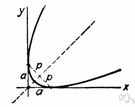analytic geometry
n.
The analysis of geometric structures and properties principally by algebraic operations on variables defined in terms of position coordinates.
American Heritage® Dictionary of the English Language, Fifth Edition. Copyright © 2016 by Houghton Mifflin Harcourt Publishing Company. Published by Houghton Mifflin Harcourt Publishing Company. All rights reserved.
analyt′ic geom′etry
n.
a branch of mathematics in which algebraic procedures are applied to geometry and position is represented analytically by coordinates.
[1820–30]
Random House Kernerman Webster's College Dictionary, © 2010 K Dictionaries Ltd. Copyright 2005, 1997, 1991 by Random House, Inc. All rights reserved.
an·a·lyt·ic geometry
(ăn′ə-lĭt′ĭk) The use of algebra to solve problems in geometry. In analytic geometry, geometric figures are represented by algebraic equations and plotted using coordinates.
The American Heritage® Student Science Dictionary, Second Edition. Copyright © 2014 by Houghton Mifflin Harcourt Publishing Company. Published by Houghton Mifflin Harcourt Publishing Company. All rights reserved.
ThesaurusAntonymsRelated WordsSynonymsLegend:
| Noun | 1. |  analytic geometry - the use of algebra to study geometric properties; operates on symbols defined in a coordinate system analytic geometry - the use of algebra to study geometric properties; operates on symbols defined in a coordinate systemmath, mathematics, maths - a science (or group of related sciences) dealing with the logic of quantity and shape and arrangement geometry - the pure mathematics of points and lines and curves and surfaces |
Based on WordNet 3.0, Farlex clipart collection. © 2003-2012 Princeton University, Farlex Inc.